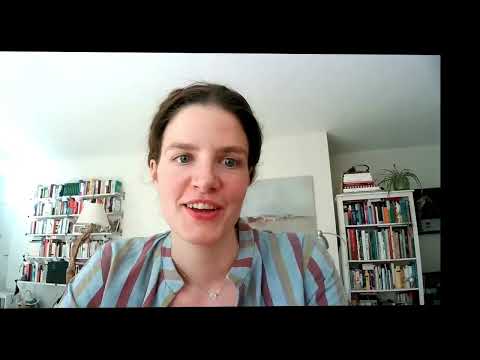 Speaker : María-Ángeles Martínez, PhD
Speaker : María-Ángeles Martínez, PhD
 Affiliation : Universidad de Alcalá
Affiliation : Universidad de Alcalá
Title : An empirical study of fictional abuse narrative and pro-social reader outcomes within the framework of storyworld possible selves
Abstract : This study uses the theoretical framework of storyworld possible selves theory (Martínez 2014, 2018) to investigate reader responses to Elif Shafak’s Booker-Prize-nominated novel 10 Minutes 38 Seconds in This Strange World (2019), a narrative about abuse and social exclusion. We expect engaged readers to project certain cultur-lly predictable storyworld possible selves, or SPSs, such as the ‘protective’ self-schema SPS or the “abused” undesired SPS, likely to result in feelings of self-transformation related to pro-social behaviors, such as increased empathy towards victims or an improvement of protective behavior.

 Long abstract :
Long abstract :
Introduction
The beneficial effects of reading narrative fiction on individual and social cognition are well documented in empirical literary studies and reader response research (Bal and Veltkamp 2013; Djikic et al. 2013; Koopman and Hakemulder 2015; Fradkin et al. 2016; Mar 2018; Troscianko 2018; Black and Barnes 2020; Lucchi Basili and Sacco 2021). However, few studies have addressed the specific mechanisms through which these effects influence personal behavior and may thus promote larger-scale social transformations.
In our study we use use Elif Shafak’s Booker-Prize-nominated novel 10 Minutes 38 Seconds in This Strange World (2019), a narrative of social exclusion and abuse. The novel tells the fictional life-story of ‘Tequila Leila’, a Turkish girl who was sexually abused by her uncle as a child, fled home to avoid a forced marriage, and thereafter eked out her living as a sex worker before being brutally murdered. The narrative is perspectivized by Leila in the liminal moments after her death, and by several of her close friends, social outcasts like herself. Our aim is to explore processes of self-transformation, increased ethical awareness, and motivation for behavioral change in engaged readers.
To this purpose, we use the theoretical framework of storyworld possible selves (Martínez 2014, 2018; Martínez and Herman 2020), or SPSs. According to SPS theory, reader engagement results from the activation of at least one of the individual’s self-schemas or possible selves – desired, undesired, past (Markus 1977; Markus and Nurius 1986; Dunkel and Kerpelman 2006; Nurra and Oyserman 2017) – upon interaction with the construct of the character or narrator through whose perspective the narrative un-folds. Resulting SPSs may be incorporated in the individual’s self-concept, thus enriching it.
Research in social psychology provides abundant empirical evidence that individuals with a more complex and varied self-concept tend to display more developed and successful behavioral regulation strategies (Linville 1987; Markus and Wurf 1987; Hoyle and Sherrill 2006; Frazier et. al 2021). Accordingly, we suggest an empirical study exploring whether engagement with this abuse narrative can be connected via SPS cre-ation to an increase in pro-social, inclusive attitudes and behaviors in individual readers, likely to result in a more inclusive, tolerant, resilient, and empathetic society.
Methods
As a first step, we pre-select extracts from Shafak’s novel which contain SPS clusters, or nodes with a significant accumulation of SPS linguistic anchors (Martínez 2018: 41-88). These are linguistic expressions connected to ambiguous reference - inclusive ‘you’, indefinite pronouns, or verbs of cognition without an explicit senser - which drag readers into close perspectival alignment with the perspectivizing narrative entity, be it a narrator or a focalizing character, and thus invite the projection of relevant SPSs at strategic narrative points (Martínez 2021). We then propose an online study where participants (N=120) read passages of the novel containing SPS clusters (test group) or text extracts of similar length without them (control).
This will be followed by open-ended questions targeting SPS projection (cf. Martinez and Herman 2020) to explore the activated SPS types, using a mixed-method-design involving investigator triangulation: Each researcher will code answers by predefined categories of SPS types in MAXQDA, allowing us to objectively measure interrater agreement.
To establish that SPS emergence is part of broader engagement with characters’ perspectives, the open-ended questions are paired with rating scales for a) identification with characters (cf. Tal-Or and Cohen 2010); b) felt similarity, pity and admiration with or for them (cf. Appel et al. 2002); and c) an item for general story liking.
To assess a correlation of engagement with specific pro-social effects of reading fiction, we will add stimulus-related questions for newly adapted resilience strategies and empathy towards victims, questions testing the accuracy of participants’ knowledge of child sexual abuse (Collings 1997) and their tendency of victim blaming. An implicit measurement of ingroup bias (based on the LIB by Maass et al. 1989) assesses if tolerance towards outgroup characters increases.
We theorize that certain SPSs, such as the ‘protective’ self-schema SPS or the ‘abused’ undesired SPS, can be empirically tied to specific pro-social outcomes. For example, individuals personally unaffected by abuse with the emergence of protective SPSs may be more susceptible to incorporating new protective strategies as an effect of the narrative (Koopman et al. 2012). Protective self-schemas may also correlate with increased empathy for survivors, tolerance, and avoidance of victim blaming.
Conclusion
In our presentation, we suggest a new way of studying the psychological processes behind narrative engagement and pro-social outcomes of reading based on SPS theory, and present the first results of an empirical study testing this framework on a verbal narrative (cf. Martínez and Herman 2020 for a graphic narrative), which can pave the way for further empirical studies on the role of individual variability in narrative experiences using physiological and neuroimaging data, as suggested by Hartung et al. (2021).

